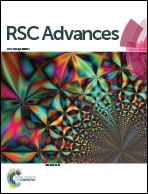Transition of electrostatic potential from the inside of an open channel to the reservoir
Abstract
Analytical work for electric double layer (EDL) is often pursued for an infinite channel. However, in reality the channel must be finite in length. This note is aimed to address how the electrostatic EDL potential near the open edge of a channel is affected by the boundary conditions on the end walls and the location where we specify the reservoir condition. The analysis is performed under the Debye–Hückel approximation, which enables us to solve the EDL potential by a semi-analytical approach. Two non-dimensional transition lengths are defined to characterize the effects near the open edge: the inner transition distances di and the outer transition distance do; in particular, we report their dependence on the non-dimensional electro-kinetic width K under various conditions. It is found that the inner di is of the order unity for small K, reaches its maximum for K near 1 or less, and decreases monotonically with increasing K. On the other hand, the outer do for small K could be of the same order as the normalized distance from the open edge to the reservoir, and decreases monotonically with increasing K. These different transition behaviours on two different sides of the channel edge are explained with the collaboration effects among the imposed boundary conditions.


 Please wait while we load your content...
Please wait while we load your content...